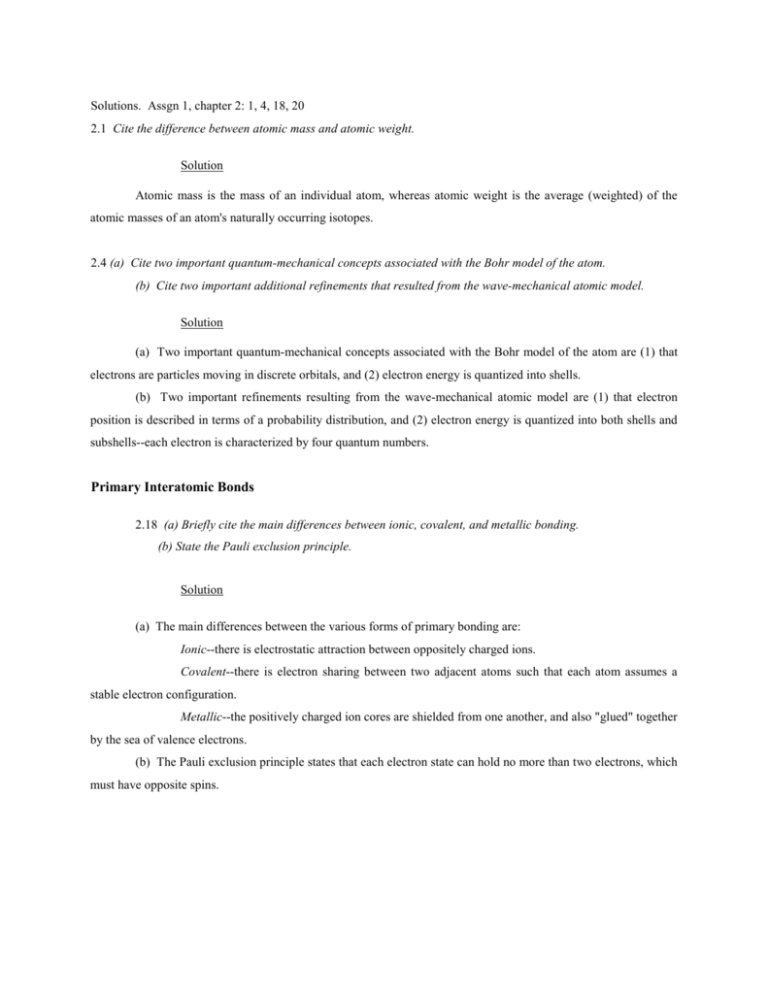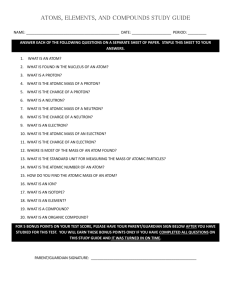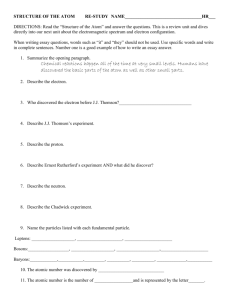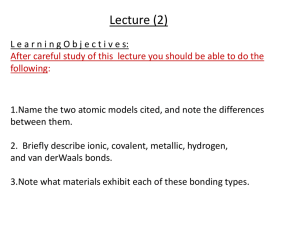Primary Interatomic Bonds
advertisement

Solutions. Assgn 1, chapter 2: 1, 4, 18, 20 2.1 Cite the difference between atomic mass and atomic weight. Solution Atomic mass is the mass of an individual atom, whereas atomic weight is the average (weighted) of the atomic masses of an atom's naturally occurring isotopes. 2.4 (a) Cite two important quantum-mechanical concepts associated with the Bohr model of the atom. (b) Cite two important additional refinements that resulted from the wave-mechanical atomic model. Solution (a) Two important quantum-mechanical concepts associated with the Bohr model of the atom are (1) that electrons are particles moving in discrete orbitals, and (2) electron energy is quantized into shells. (b) Two important refinements resulting from the wave-mechanical atomic model are (1) that electron position is described in terms of a probability distribution, and (2) electron energy is quantized into both shells and subshells--each electron is characterized by four quantum numbers. Primary Interatomic Bonds 2.18 (a) Briefly cite the main differences between ionic, covalent, and metallic bonding. (b) State the Pauli exclusion principle. Solution (a) The main differences between the various forms of primary bonding are: Ionic--there is electrostatic attraction between oppositely charged ions. Covalent--there is electron sharing between two adjacent atoms such that each atom assumes a stable electron configuration. Metallic--the positively charged ion cores are shielded from one another, and also "glued" together by the sea of valence electrons. (b) The Pauli exclusion principle states that each electron state can hold no more than two electrons, which must have opposite spins. 2.20 Make a plot of bonding energy versus melting temperature for the metals listed in Table 2.3. Using this plot, approximate the bonding energy for copper, which has a melting temperature of 1084°C. Solution Below is plotted the bonding energy versus melting temperature for these four metals. From this plot, the bonding energy for copper (melting temperature of 1084°C) should be approximately 3.6 eV. The experimental value is 3.5 eV.








